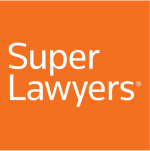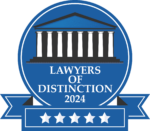
Do you know that about 7.3 million U.S. students require special education? That’s 15% of all students enrolled in public schools across the country. With such numbers, it becomes essential for us to implement teaching methods that benefit each learner.
That is where Universal Design for Learning comes in as an education lawyer can explain.
In this blog, our friends at K Altman Law are going to break it all down – what UDL is, why it matters for students with disabilities, and how teachers can use it to make learning easier for everybody.
Simply put, UDL is a way of teaching that works for all the abilities or challenges of a student. Teachers can present information in different forms of presentation and provide choices for students to express what they know. These are rather flexible and adaptable options of study, which make education accessible to everyone.
Behind UDL, there are three big ideas that help teachers build lessons according to every individual’s need.
1. Different Means For Acquiring Information
Not all learn the same way. The UDL theory guides the teacher to explain the same concept with different tools. So whether he or she is a book lover, video watcher, or an interactive gamer, it can be explained in a way that will help him or her understand the lesson.
2. Different Ways To Represent What You Know
UDL also gives students multiple ways to prove and illustrate what they have learned. Some would want to put it on paper, while others would want to speak about it, and then there are those who would want a project. UDL gives them that option.
3. Diverse Ways Of Staying Interested
Staying motivated is the key to learning, and what motivates one student will not motivate another. UDL encourages teachers to offer different activities to keep students interested.
A disability student requires special care, and UDL offers flexibility in learning options. Let’s see how UDL facilitates students with different types of disabilities:
1. Physical Disabilities
For students with physical disabilities, UDL has alternative learning strategies. Like a student who cannot use the pencil to write may rely on speech-to-text software; or, for example, a student who is not mobile can complete the assignment on a tablet. These alternatives allow students to join the learning without restrictions.
2. Cognitive Disabilities
Cognitively disabled students, for instance, have conditions such as ADHD or autism, which make it hard for them to understand general instructions. In UDL, the instructions are presented in a step-by-step manner, making it easier for cognitively impaired students to follow instructions for the lesson.
3. Disabilities In Sensory Spaces
UDL also accommodates students with disabilities in the sensory spaces, for instance, the deaf students and others who are visually impaired. The teacher will provide an audio text for them or a captioned video. UDL promises that any student whatever their sensory need is has access to the lesson.
Here is how teachers can start using UDL in their classrooms in the easiest way possible:
1. Find Out What Students Need
The teacher should first find out what difficulties are there in front of students. These may be difficulties in reading or maintaining focus or even difficulties in hearing.
2. Offer Different Learning Options
This will allow teachers to use various teaching methods to promote learning for all students in the manner suited to each individual. The options could include using videos, hands-on activities, and interactive games.
3. Allow Students To Demonstrate Learning In Their Own Style
Teachers can provide students with other ways to demonstrate their understanding through, for instance, a test. They might ask them to make a video, build a project, or present to the class. Offering choices to students helps them feel more confident.
UDL is good for students; however, it has its challenges too.
1. Time And Resources
It will take time to plan several options for the lesson. It also calls for some appropriate resources, like technology or specialized materials.
2. Teacher Training
Not all teachers have training in UDL. Schools may need to provide additional help or professional development to support teacher use of UDL in their classrooms.
3. Balancing Different Needs
Every student has different needs and balancing all of these can be challenging. The teacher must be flexible and willing to adapt her plan if a particular activity is not working.
Universal design for learning is a very powerful way of teaching within special education as it allows any child to access the learning process regardless of ability. The theory opens different possibilities of learning, expression, and engagement for every student. As more teachers begin using UDL, we will see greater success with students of all abilities. If your student needs accommodations and the school is not helping, contact a lawyer near you for help.







Business Formation Lawyer Birmingham AL – Business Dispute Lawyer Birmingham AL – Business Lawyer Birmingham AL – Estate Planning Lawyer Birmingham, AL – Probate Lawyer Birmingham AL – Contract Dispute Lawyer Birmingham AL – Small Business Lawyer Birmingham AL – Breach Of Contract Lawyer Birmingham AL – Trust Administration Lawyer Birmingham AL – Living Trust Lawyer Birmingham AL – Business Litigation Lawyer Birmingham AL – Contract Dispute Lawyer Shelby County AL – Breach Of Contract Lawyer Shelby County AL – Trust Administration Lawyer Shelby County AL – Contract Dispute Lawyer Montgomery AL – Breach Of Contract Lawyer Montgomery AL
© Copyright 2025. All Rights Reserved by Bachus Brom & Taylor LLC | Sitemap
We are Bachus, Brom & Taylor, LLC, your trusted business and estate legal partner in Alabama.
